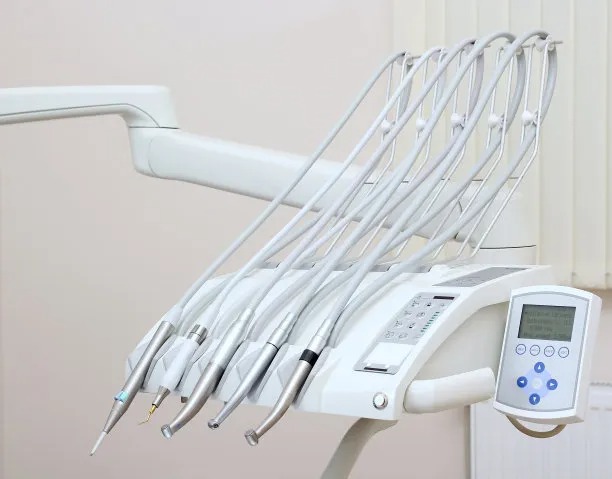Understanding the Process and Aftercare of Extracting a Tooth for Optimal Oral Health and Wellbeing
Summary: Extracting a tooth can be a necessary procedure for maintaining optimal oral health. Understanding the entire process and the necessary aftercare is crucial for effective recovery and overall wellbeing. This article encompasses the step-by-step procedure of tooth extraction, the importance of proper aftercare, common concerns that may arise post-extraction, and when to seek professional help. By delving into these areas, we aim to equip individuals with the knowledge needed to navigate this dental procedure smoothly, ensuring that their oral health remains uncompromised during the recovery phase.
1. The Tooth Extraction Process Explained

The tooth extraction process typically begins with a comprehensive dental examination and consultation. During this appointment, the dentist evaluates the condition of the tooth in question through X-rays and visual inspection. Understanding the degree of decay or damage is essential, as this will influence the extraction technique that the dentist will employ. Patients are encouraged to discuss their medical history and any concerns they might have regarding the procedure.
Once the evaluation is complete, the dentist will proceed to administer anesthesia to ensure that the patient remains comfortable throughout the extraction. Local anesthesia is often used for straightforward extractions, while sedation might be required for more complicated cases, such as impacted wisdom teeth. Preparing the patient mentally and physically is imperative, as it reduces anxiety and enhances the overall experience during the procedure.
After anesthesia has taken effect, the dentist carefully loosens the tooth from its socket using specialized instruments. Depending on the complexity of the extraction, this may involve removing gum tissue or bone to facilitate the removal. The extraction concludes with the dentist placing gauze into the socket to control bleeding and beginning the initial stages of healing. Understanding these steps helps demystify the process for patients, making it a more manageable experience.
2. Importance of Aftercare After Tooth Extraction
Aftercare is a crucial component of the tooth extraction process, as it directly influences the recovery timeline and the risk of complications. Immediately following the extraction, patients are advised to bite down on the gauze for at least 30 minutes to ensure blood clot formation. This is vital in preventing excessive bleeding and promoting healing. Patients should avoid disturbing the area to allow proper clotting.
Post-extraction, it is essential to adhere to specific dietary guidelines. Initially, patients should consume soft foods and avoid hot, spicy, or crunchy items that might irritate the extraction site. Hydration is equally important, but drinking through a straw should be avoided since this can dislodge the healing blood clot. These dietary tweaks contribute significantly to the healing process, facilitating a smoother recovery.
Additionally, maintaining optimal oral hygiene is crucial during the healing phase. Patients should refrain from brushing the extraction site directly for the first few days but can gently brush the surrounding teeth. After 24 hours, they may begin to rinse their mouths with warm salt water to keep the area clean and aid in healing. Understanding these aftercare instructions enhances patient compliance and reduces the risk of complications like dry socket or infections.
3. Common Concerns and Symptoms After Extraction
Following a tooth extraction, its natural for patients to experience some discomfort, swelling, and minor bleeding. These symptoms are generally expected and can usually be managed with prescribed pain relief medications and cold compresses. However, distinguishing between normal discomfort and signs of a potential complication is essential for effective recovery.
Signs of dry socket, where the blood clot fails to form or is dislodged, may include severe pain that develops a few days post-extraction. Patients should also look out for symptoms like fever or pus discharge, which can signal an infection. Understanding these concerns helps patients act promptly and seek medical assistance when necessary, ensuring they receive timely interventions for their wellbeing.
Moreover, it’s vital for patients to know when to reach out to their dentist after the procedure. If pain is severe or persists beyond a few days, or if any unexpected side effects occur, seeking professional help is imperative. Clear communication between the patient and the dentist can alleviate fears and lead to quicker resolutions, fostering a healthier recovery process.
4. When to Seek Professional Help After Extraction
While many post-extraction symptoms are manageable at home, there are critical signs that require immediate attention. If bleeding continues excessively after the initial day, or if pain escalates rather than diminishes, it is essential to contact a dental professional. Recognizing these indicators helps prevent unnecessary discomfort and complications during recovery.
In some cases, patients may experience swelling that does not subside after a few days. Severe swelling could indicate an infection or other underlying issues that necessitate further evaluation. Knowledge about these signs empowers patients, enabling them to take proactive measures regarding their oral health.
Regular follow-up appointments with the dentist are also crucial for monitoring the healing progress. During these visits, the dentist can assess the extraction site and address any developing concerns. This ensures that the patient is on the right path toward recovery and maintains optimal oral hygiene throughout the process.
Summary:
Understanding the process of tooth extraction and appropriate aftercare is essential for anyone facing this dental procedure. By discussing each phase of the extraction process, from the initial evaluation to post-care considerations, we provide a comprehensive guide that promotes better oral health and wellbeing. Knowledge of what to expect and how to care for oneself post-operation alleviates anxiety and empowers patients to make informed decisions about their dental health.
This article is compiled by Vickong Dental and the content is for reference only.



